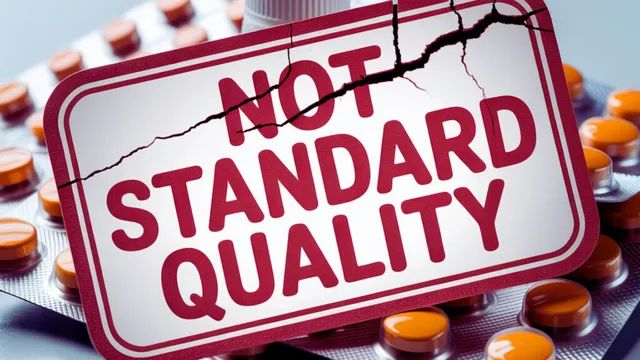Generic Medicines Under Scanner: CDSCO on the Backfoot
India’s reputation as the “pharmacy of the world” is facing a major credibility crisis as Generic Medicines Under Scanner: CDSCO on the Backfoot becomes a pressing issue in the public health and regulatory landscape. The Central Drugs Standard Control Organisation (CDSCO), India's national regulatory body for pharmaceuticals and medical devices, is now in the spotlight after a series of quality control failures have come to light — both domestically and internationally.
This blog post explores the rising concerns around the safety and efficacy of generic medicines in India, the role and response of CDSCO, and what this means for the healthcare sector, pharmaceutical exports, and the end consumers.
Concerns have been raised about the quality of generic medications and the Central Drugs Standard Control Organization's (CDSCO) attempts to detect and eliminate illegal or unsafe generics. Even though the CDSCO and state laboratories screen a sizable number of samples, the testing volume is minimal in comparison to India's total drug production volume. This raises questions regarding the quantity of inferior generics that are available on the market.
Concerns about Testing:
Although the CDSCO and state laboratories test a significant number of samples each year (roughly 70,000–80,000), this represents a small portion of all drug batches manufactured in India, which raises concerns about the capacity to completely identify and eliminate lower or bogus generics.

Why Are Generic Medicines Under Scanner?
Generic medicines are the backbone of affordable healthcare in India and abroad. However, recent reports of substandard drugs, failed quality tests, and global alerts from foreign regulators have brought their safety and consistency under the scanner.
Key Issues Triggering Scrutiny:
- Quality Control Failures: Several batches of generic medicines failed quality checks, both in India and in export markets such as Africa and Southeast Asia.
- WHO Red Flags: The World Health Organization issued medical product alerts in 2023 and 2024 regarding cough syrups and other generics from Indian companies causing harm or deaths abroad.
- Lack of Uniform Testing: Variations in drug composition, especially in antibiotics and pediatric medicines, raised concerns about the regulatory framework.
- Export Bans and Warnings: Countries like Uzbekistan, Gambia, and the Philippines have raised objections, suspended sales, or issued bans on certain Indian generics.
- Public Trust Erosion: With the rise in reports, domestic patients and healthcare providers are beginning to question the quality of some government-supplied generic medicines.
CDSCO on the Backfoot: Regulatory Gaps Exposed
The CDSCO, which is supposed to act as a gatekeeper for medicine safety, has come under heavy criticism for its reactive approach, rather than proactive quality enforcement. Critics argue that it failed to detect problems before drugs were exported or reached patients.
Key Points of Contention:
- Delayed Inspections: In many cases, action was only taken after WHO or importing countries raised red flags.
- Inadequate Testing Labs: There are concerns about the number and capacity of government-approved testing laboratories.
- Fragmented Oversight: Indian drug regulation is divided between CDSCO (central) and state drug regulators, leading to coordination issues and loopholes.
- Lack of Transparency: Critics argue that CDSCO has not been transparent about how it enforces penalties, cancels licenses, or investigates drug alerts.
Major Incidents That Sparked the Debate
-
Cough Syrup Tragedies (2022–2023)
WHO issued multiple alerts on Indian-manufactured cough syrups allegedly linked to child deaths in Gambia and Uzbekistan. Testing revealed toxic contaminants like ethylene glycol and diethylene glycol — substances used in antifreeze. -
Antibiotics Failing Standards
Independent surveys by NGOs and media revealed that a notable percentage of antibiotics available in public hospitals failed potency or dissolution tests. -
Delhi High Court Ruling
The Delhi High Court directed the Union Health Ministry and CDSCO to explain the measures being taken to ensure drug safety after a public interest litigation pointed out rampant availability of low-quality generics.
Global Impact: Indian Pharma at Risk
India exports generic medicines to over 200 countries. Its industry, worth over $50 billion, supplies around 40% of generic drugs in the U.S. and a large share of essential medicines in Africa.
These quality controversies risk:
- Loss of Global Trust
- More Stringent Import Requirements
- Suspension of Product Approvals
- Loss of Market Share to Other Countries (like China or Vietnam)
What Is Being Done?
In response to the growing pressure, the Indian government and CDSCO have started taking steps, though many believe it’s too little, too late.
Measures Announced:
- Random Testing of Generic Drugs
- Revamp of Testing Labs with better equipment and staffing
- Revised GMP (Good Manufacturing Practices) to match global standards
- Increased Surveillance on Export Quality
- Blacklist of Violating Manufacturers
Some state governments are also taking action. For example, Tamil Nadu Medical Services Corporation (TNMSC) has started retesting generic drugs purchased for public distribution.
The Road Ahead: What Needs to Change?
To restore public and global confidence, systemic changes are essential:
- Centralized & Coordinated Drug Regulation
- Mandatory Transparency on Drug Quality Reports
- Stronger Penalties for Offenders
- Regular Third-party Audits
- Real-time Public Dashboard on drug approvals and test results
Conclusion
The controversy surrounding Generic Medicines Under Scanner: CDSCO on the Backfoot highlights a critical juncture for India’s pharmaceutical industry. While the sector has been a global leader in supplying affordable generics, these recent setbacks underscore the urgent need for regulatory overhaul, increased transparency, and unwavering commitment to public safety.
India’s ability to retain its global pharmaceutical leadership will now depend not just on affordability, but also on consistent, high-quality production — and on how swiftly and effectively CDSCO regains control of the narrative.